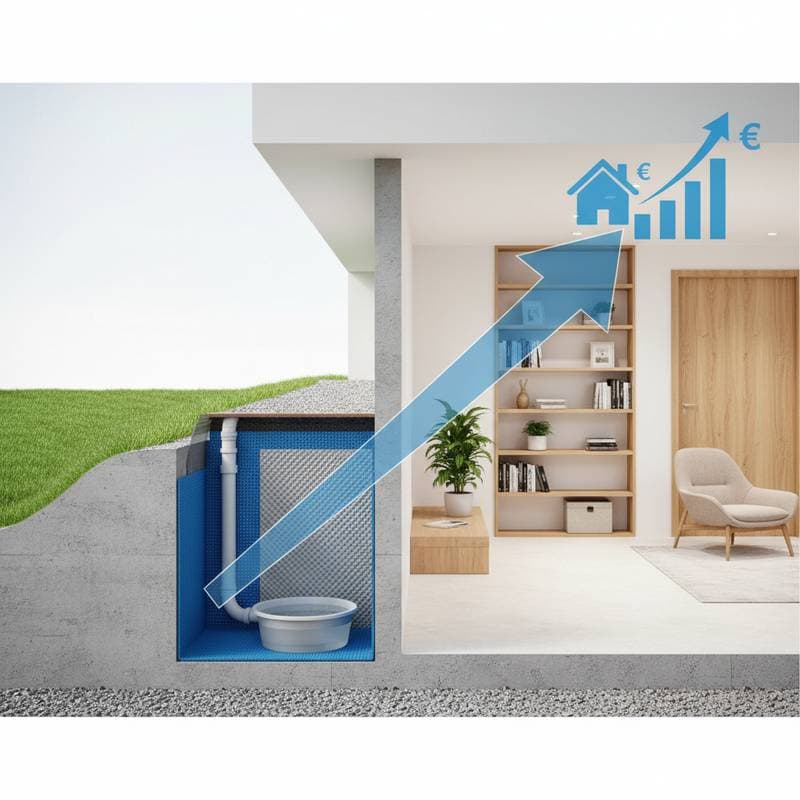DIY Flooring vs Pro Install: Save or Spend in 2025?
Flooring upgrades can completely change how a home feels, but deciding whether to install it yourself or hire a professional often raises more questions than answers. The choice is not only about cost. It involves system compatibility, long-term durability, and how the installation interacts with your home’s structure.
System Overview
SYSTEM OVERVIEW
Technology Type: Flooring installation (laminate, hardwood, vinyl, tile)
Efficiency Rating: N/A (performance measured by durability and maintenance cycles)
Climate Zones: All DOE zones with specific material considerations
Average Capacity: Coverage from 200 to 1,500 sq. ft. per project
Typical Lifespan: 10 to 50 years depending on material and quality
Installation Complexity: Ranges from simple (click-lock vinyl) to complex (ceramic tile, hardwood with subfloor prep)
Regional Performance Analysis
The right flooring choice depends heavily on climate. In humid regions, engineered hardwood and vinyl plank resist swelling better than solid hardwood. In colder zones, tile floors can feel uncomfortable without radiant heating. Areas with wide seasonal swings in humidity demand expansion gaps and careful subfloor preparation to prevent buckling. A professional installer typically accounts for these variables, while DIYers may overlook them.
Comparing DIY and Professional Installation
DIY Installation
- Technical Specifications: Click-lock laminate and vinyl planks are designed for straightforward assembly. Tools required include a tapping block, spacers, and a saw for trimming.
- Efficiency: Labor cost is eliminated, reducing the project budget by 30 to 50 percent.
- Performance Metrics: Success depends on correct subfloor leveling, moisture barriers, and expansion spacing. Mistakes here can shorten flooring lifespan by more than a decade.
- Best Use Scenarios: Small rooms, low-moisture areas, or projects where future replacement is expected.
Professional Installation
- Technical Specifications: Professionals use moisture meters, leveling compounds, and specialized saws. They can handle complex installations like herringbone patterns, tile underlayment, or nail-down hardwood.
- Efficiency: Higher upfront cost but often includes warranty coverage on labor.
- Performance Metrics: Proper installation extends material lifespan, reduces maintenance, and ensures compliance with manufacturer warranties.
- Best Use Scenarios: Large open spaces, high-moisture areas like bathrooms, or premium materials where mistakes are costly.
Integration with Existing Infrastructure
Flooring does not exist in isolation. It interacts with subfloors, underlayment, and even HVAC systems. For example, radiant heating requires flooring rated for thermal transfer without warping. Tile and engineered wood are compatible, while solid hardwood can crack. A professional installer evaluates these interactions, ensuring mechanical systems and flooring materials work together.
Cost-Benefit Analysis
| Installation Type | Average Cost per Sq. Ft. | Long-Term Maintenance | Risk of Failure | Warranty Coverage |
|---|---|---|---|---|
| DIY Vinyl Plank | $1.50 to $3 | Low | Moderate | None |
| DIY Laminate | $2 to $4 | Moderate | Moderate | Limited |
| Pro Hardwood | $6 to $12 | High but long lifespan | Low | Yes |
| Pro Tile | $10 to $20 | Low | Very Low | Yes |
DIY saves money upfront but increases the risk of improper installation. Professional work costs more but delivers measurable long-term stability and warranty protection.
Maintenance Considerations
Climate influences how flooring ages. In coastal regions, salt and humidity accelerate wear. In arid climates, wood can dry out and separate. DIY installers may not anticipate these conditions, but professionals often include protective measures like sealants or vapor barriers.
Making It Happen
When evaluating whether to save or spend, the decision comes down to project scope, material type, and tolerance for risk. For small spaces with forgiving materials like vinyl plank, DIY can be a smart financial move. For large areas or premium finishes, professional installation offers better lifecycle value.
Your Next Steps
- Assess Climate Factors: Consider humidity, temperature swings, and expected wear.
- Match Material to Use: Choose flooring that fits the room function and environmental conditions.
- Calculate Lifecycle Costs: Balance upfront savings against potential repair or replacement costs.
- Consult Specialists When Needed: If radiant heat, tile underlayment, or complex patterns are involved, professional help is advisable.
Homeowners who understand these technical considerations will make better decisions about flooring installation. By weighing short-term savings against long-term performance, you can choose the path that delivers comfort, durability, and value for your home.



